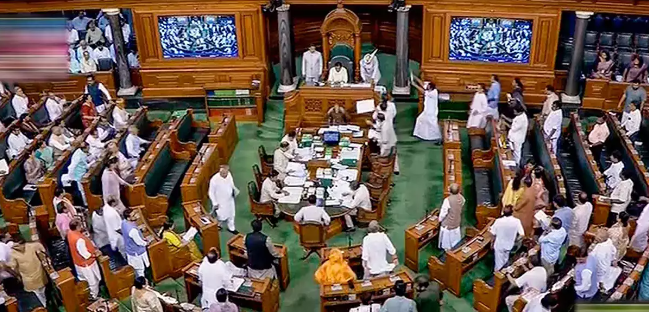India is voting as we speak in what is going to be the largest democratic electoral exercise in the history of elections. Not only by the scale of the electoral process but also the money involved in it makes it the most ‘expansive’ and most expensive election in the world, surpassing even the United States. According to The Guardian, parties and candidates spent around $8.7 billion in the last Lok Sabha elections in 2019 to woo more than 900 million eligible voters. For the 2024 elections, around 968 million people have registered to vote—almost as many as the total population of Europe and the USA combined. Of these nearly a billion voters, 2 million are young Indians voting for the first time.
The Lok Sabha, or House of the People, is also called ‘the lower house’ and is the more powerful of the two houses that make up India’s bicameral parliament. The party or coalition that wins the majority of seats in Lok Sabha gets to nominate one of their elected members to serve as the head of the government - the prime minister. The prime minister is then entrusted with selecting ministers to serve in the cabinet. The 2024 general elections will decide who gets to sit in this chair. Apart from providing the Prime Minister to the country, the Lok Sabha has the power to hold the government accountable by introducing and passing no-confidence motions. Not just that, this House is in charge of the purse strings: all tax, borrowing, and spending bills only require the approval of the lower house
In terms of numbers, Lok Sabha has more seats than the upper house i.e., 543. While the Rajya Sabha - the upper House has a maximum of 250. The numbers thus give Lok Sabha a greater heft in legislative negotiations.
In India’s parliamentary system, there are no term limits. Theoretically, if elected by the people, one can hold the prime ministerial position for an endless number of terms. According to the Constitution of India, the maximum membership of the House can be 552. Currently, the House has 543 seats to be filled through general elections across the country. Two additional members from the Anglo-Indian community were nominated by the President of India on the advice of the Government of India. In 2020, these seats were abolished by the 104th Constitutional Amendment. Of these 543 seats, 84 seats are reserved for representatives of Scheduled Castes and 47 for Scheduled Tribes, totaling the number of reserved seats as 131.
According to India’s electoral rules, there must be a polling station within 2 kilometers of every habitation. Consequently, the election commission had to set up a polling station for the only registered voter in the village of Malogam in Arunachal Pradesh. Many of India’s 11 million election workers would travel - many times on foot - across glaciers, deserts, jungles, and even an ocean to make sure every eligible Indian can vote. In Indian elections, there are no paper ballots for in-person voting. Every eligible voter casts their vote through an Electronic Voting Machine, which would be deployed for even a single voter in a particular dwelling. As of 2019, around 1.74 million electronic voting machines were deployed across more than 1 million polling stations.
As one can imagine how difficult it would be to ensure that around a billion people vote securely in a single day, the general elections in India are spread over several weeks in sequential phases by region. The 2024 Lok Sabha elections are being held over seven phases between April 19 and June 1, with all the votes counted on June 4.
The first phase of the election took place on April 19 in 102 geographic regions called constituencies in 17 states and 3 Union Territories. Followed by the second Phase on April 26 in 89 and May 7 in 95 constituencies across India. The subsequent phases are gradually moving across the country to cover the rest of the regions.
Unlike the US elections, there are no primaries in Indian elections. Candidates are nominated by the party leaders. If candidates fail to win party backing, they can run as independent candidates. In this case, the likelihood of victory narrows considerably unless the candidates are more popular than the party. Which happens rarely. Of the 543 MPs elected in 2019, only 4 were independent candidates.
Since the Supreme Court order of 2013, the voters can officially cast a “protest” vote by selecting the “none of the above” (NOTA) option in case they want to assert their dissent by not supporting any candidate. However, NOTA is not considered an effective protest vote because even if NOTA gets the most votes, it does not trigger a repoll. In 2021, the Supreme Court asked the Election Commission of India what happens if NOTA wins.
Indian elections follow the first-past-the-post form of voting; the individual candidate with the most votes wins the election. If NOTA wins, the candidate with the second-most votes (after NOTA) will be declared the winner. In 2019, NOTA earned just over 1 percent of the total vote. However, in many constituencies, NOTA got more votes than the victory margin of the winning candidate.
The Lok Sabha elections are a vital component of India's democratic framework, ensuring the representation of its diverse population in the law-making process. This elaborate electoral system is designed to maintain the integrity and fairness of the elections. It remains to be seen whether India’s leaders contribute to the integrity and fairness of the elections or work to destroy it through communism and other divisive tactics during their campaigns.

